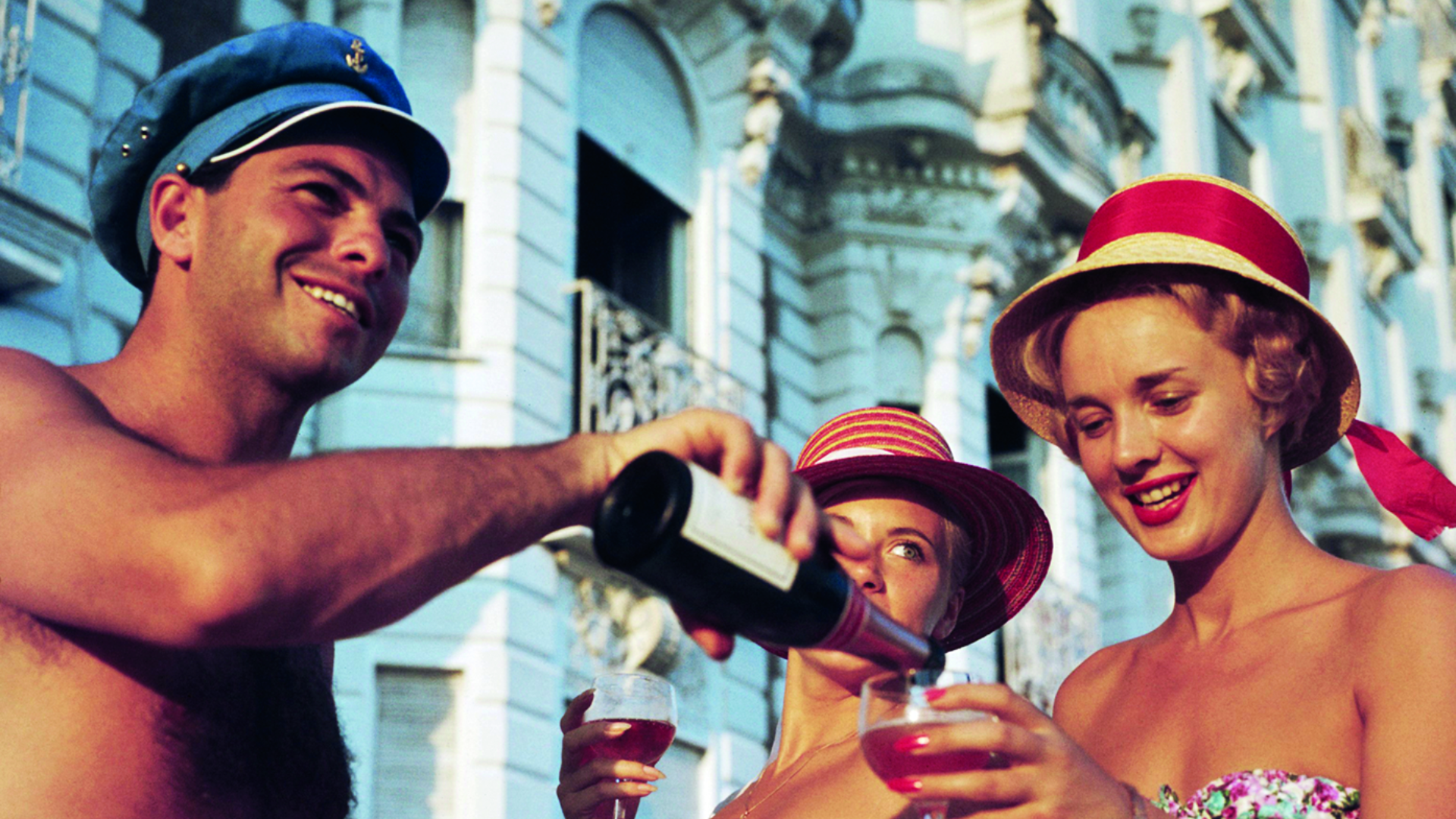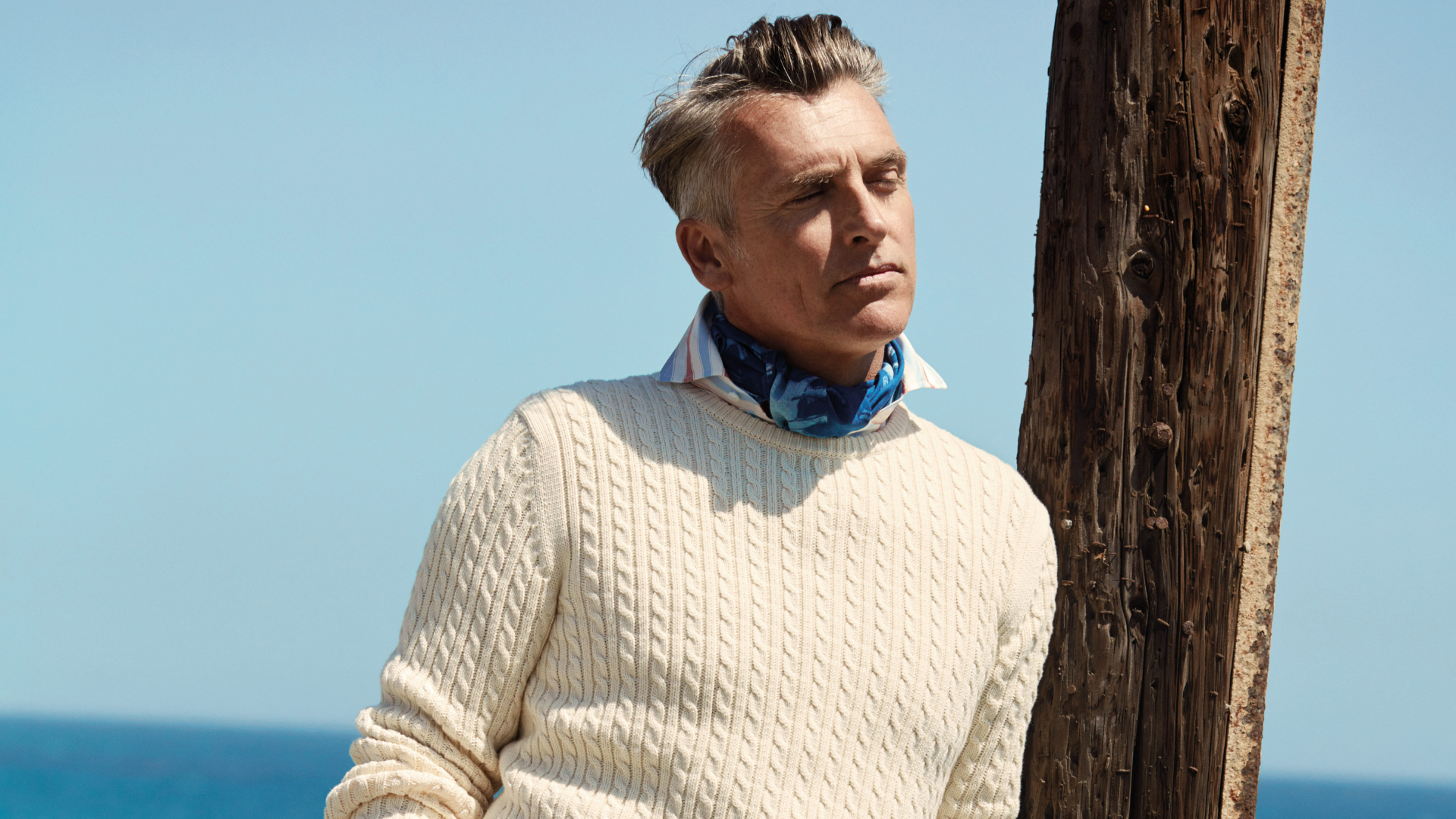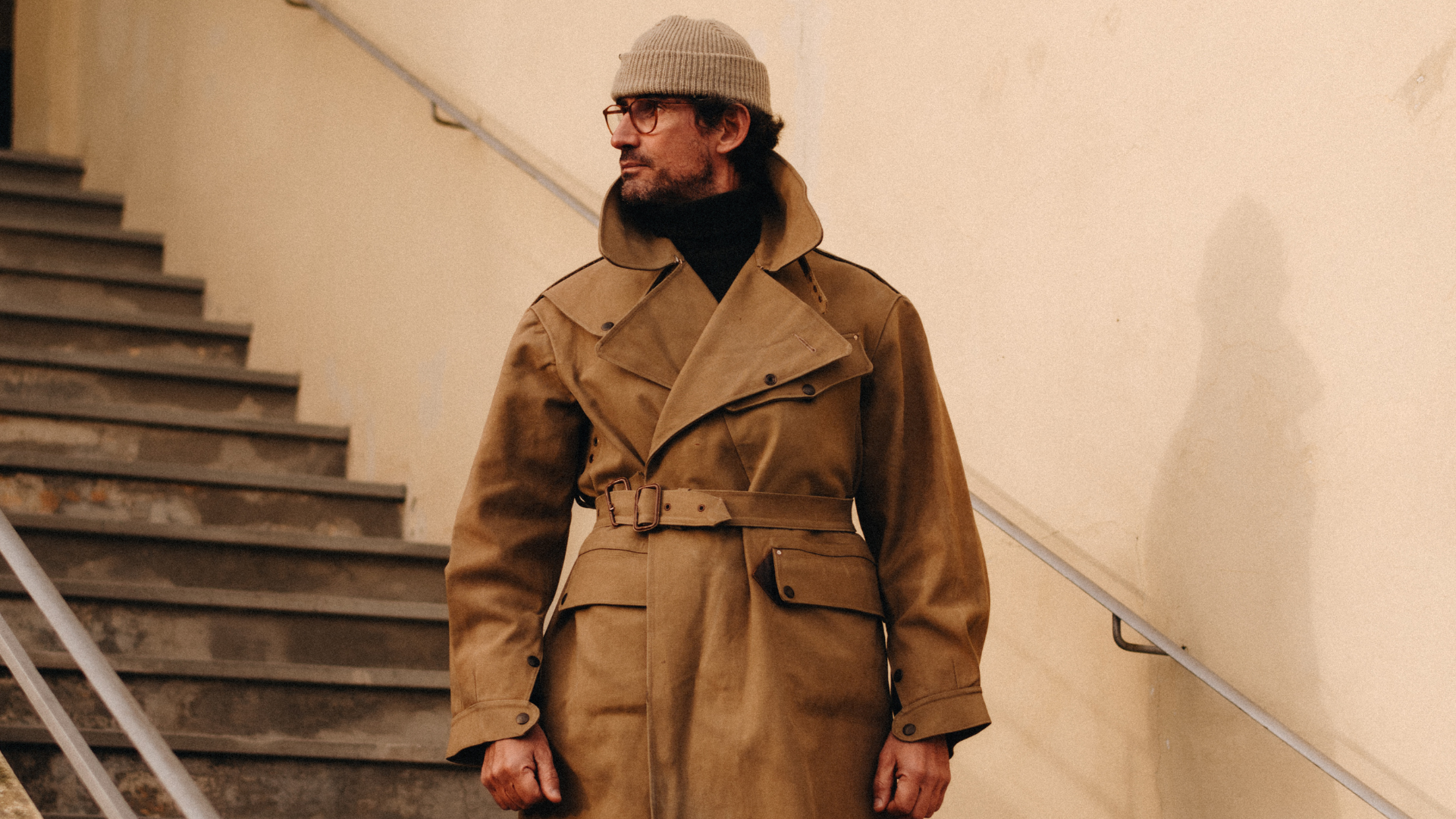A Deep-Sea Probe Into U.S. Navy Dress
From the iconic bell-bottom trousers to the crisply tailored service dress blues, the U.S. Navy has not only defended American shores but has also cast a profound sartorial influence far beyond the confines of naval decks. THE RAKE deciphers nautical.

On April 14th 1938, the 32nd President of the United States, Franklin D. Roosevelt, exclaimed to the nation on a radio broadcast: “A smooth sea never made a skilled sailor.” Roosevelt aimed to instil this nautical proverb in Americans enduring the Great Depression. Officially, the global economic downturn eased in 1939, but on September 1st news of German troops invading Poland reached Washington, DC. In the cabinet room at 10 Downing Street in the UK, after little deliberation by the top brass, Prime Minister Neville Chamberlain declared war on Germany.
Prince Louis of Battenberg, a German prince and former Sea Lord and Chief of the Naval Staff of the United Kingdom, was the father of Louis Mountbatten, who received mention in dispatches for his courage, initiative, and devotion to duty during the conflict. In 1941, the then Prime Minister, Winston Churchill, appointed Mountbatten as captain of the Royal aircraft carrier HMS Illustrious, stationed in Norfolk, Virginia, United States of America. At the tail end of 1941 Mountbatten was posted out to the Atlantic Naval Base, where he agreed to lecture American naval officers on British strategy against the German Navy. But it was on condition that he could travel to America’s Pacific Naval Base at Pearl Harbour in Hawaii. On arrival, in full-dress white uniform decorated with an aiguillette (ornamental braid cord), he was greeted by Admiral Husband E. Kimmel, who was dressed in the corresponding US version. Hawaii, in the tropics, is certainly an island where white uniforms come into their own. It is the natural colour of cotton, a fabric that profits from being durable, breathable, and easy to wash. In addition, it contrasts well with the blue of the sea and sky, which improves the practice of spotting sailors. When Mountbatten asked the audience if they had any questions at the lecture, there was one response probing the possibility of the war coming to the United States. According to a historical source, he pulled down a map, pointed, and said, “Right here.” Mountbatten also warned Harold Stark, U.S. chief of Naval Operations, that if an attack resulted in a full-blown conflict, they were not well-equipped to nullify it. On Mountbatten’s return to the UK, his meeting with Churchill at Chequers was far from harmonious, but he was a favourite of Britain’s leader and at the end of October in '41 he assumed the role of Combined Operations Advisor - a significant decision by Churchill.








In the early '20s a Japanese student was majoring in English at Harvard University who would later become a naval attaché in Washington. His name was Yamamoto Isoroku, a relentless poker player who considered the U.S. Navy to be a club for golfers and bridge players. On his return to Japan he climbed the Navy ladder, and by 1939 he had become Commander in Chief of the Combining Fleet. Despite the expertise that Mountbatten imparted to the US Navy, they floated on warfare inactivity and then, three months after those infamous warnings, Yamamoto masterminded an attack on Pearl Harbour, the catalyst for the United States entering World War II. The ensuing offensive against the Empire of Japan was monumental. The Battle of Midway, the Battle of the Coral Sea, and the Naval Battle of Guadalcanal were notable for combat, with the latter being the first instance when the United States Marine Corps' utility uniform came back into action. It was the summer field uniform, consisting of a khaki cotton shirt, trousers, leggings, and a M1917A1 steel helmet.
It was essentially the same uniform they wore during the Banana Wars of the early 20th century. And before World War II, the Marine Corps had used a loose-fitting blue denim fatigue uniform; since 1900 it has been difficult to pinpoint a fabric that has been idolised by such a cross-section of cultures. The US Navy was an early adopter, as they saw its hard-wearing and durable virtues. But it wasn’t a fabric that was confined to one uniform; it was in fact applied to a range. The US navy vehemently embraced bell-bottom trousers, made from navy twill and, of course, blue denim. Components of the dungaree uniform consisted of denim trousers, a black webbing belt, a denim jumper, and a blue chambray shirt. The World War II trouser design featured wide-leg blue denim pants with a large pocket on the front, often extending around the thigh and towards the seat. The design set itself apart from others by cutting each leg from a single piece of fabric. Later, during the Vietnam war, it was interesting that Navy SEALS preferred Levi’s jeans instead of standard-issue dungarees. Today, if you’re thinking about taking advantage of denim’s practical traits with a small hint of rebelliousness, the blue chambray button-down collar shirt from The Rake would fuse with the Neil blue Japanese selvedge denim jacket and Wild Thing blue rinsed wash stretch denim fabric straight leg/70s fit jeans, both from Barbanera. If you really are taking your boat out, a version of the US Navy ‘Gunner’ smock/parka would certainly protect you from the elements.


Before Humphrey Bogart became one of the greatest male stars in cinema, he joined the US Navy. Aboard the USS Leviathan, a German ocean liner, he always looked immaculate in his sailor uniform. After the war, for a time he did join the Coast Guard Reserve, but during World War II he was cast in the Howard Hawks-directed War/Romance film To Have and Have Not (1944). Acting opposite Lauran Bacall, even the film’s viewers realised it was love at first sight. It was a turning point in Bogie's life, both romantically and professionally. But reversing back to primary dress for the US Navy, dress uniforms have three categories, from least to most formal: service, full, and dinner dress. Even for service dress, they wore the timeless navy blazer, known then as a reefer coat, with a white shirt and a black four-in-hand necktie. In To Have and Have Not (1944), Bogart was uniformed and adorned with a service peaked cap and often a cigarette. On his bottom half, he sported off-white gabardine pleated trousers and white nubuck leather cap-toe Oxford bucks, which exude his laid-back charm. It’s actually a rather louche look, but the base of the style is the navy blazer. By choosing either The Rake-designed navy wool twill double-breasted blazer or the navy wool double-breasted blazer from B Corner, they do permit you to be as avant-garde as you’d like with your overall outfit.








Junior enlisted sailors, for service dress, wore a navy-blue wool pullover jumper with an elongated tar-flap collar adorned with three rows of white stripes and two white stars, one at each corner of the collar. For ceremonies such as changes of command and decommissioning, full dress was required, while the blue/white jacket uniforms, which feature a short mess jacket, and accompaniments, were for dinner dress. Included in service uniforms were the aforementioned khaki and the summer white service attire, but the most popular coat for service uniforms was the pea coat. It is the linchpin garb for functionality, and it was the attribute that not only American sailors utilised; it was later popularised by Beatniks, and Yves Saint Laurent opened his 1962 fashion show with a pea coat. First introduced into the U.S. Navy in 1943, the iconic N1 deck jacket, which was tightly woven, heavy and for insulation, was lined with a thick Alpaca wool pile. Beloved by servicemen, it also transferred in popularity to popular culture, noticeably a favourite garment of Paul Newman and James Dean.






Finally, in the realm of nautical style, one cannot leave out the Breton-striped shirt. In the '20s, there were a number of American barons, heiresses, and many of the luminaries of the Jazz Age who had decamped to the Riviera. Strolling along La Garoupe Beach, Antibes, with his wife Sarah, the artist Gerald Murphy was sporting a white bandana, Breton shirt, white shorts, espadrilles, and a walking stick. It was the epitome of old-school beach style. The first iteration of Breton (“from Brittany”) sweaters was designed with tightly knit local wool to protect fishermen. In 1938, Armor Lux was founded in Brittany, and still to this day, they are the most distinguished purveyors of the Breton-striped shirt. In this particular division of nautical style, they are leaders; there is a troupe of brands that continue to uphold the history of the U.S. Navy with their design creations.


















